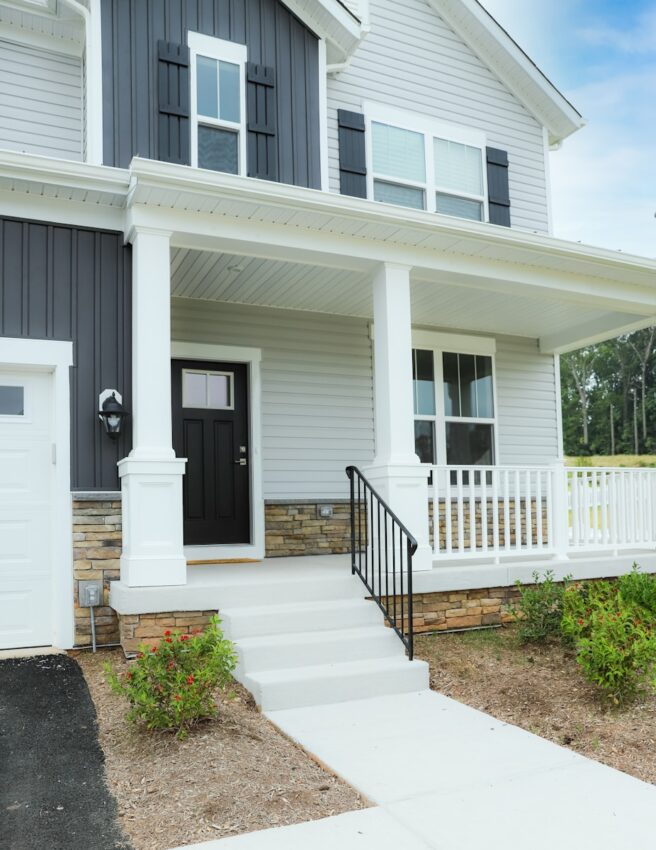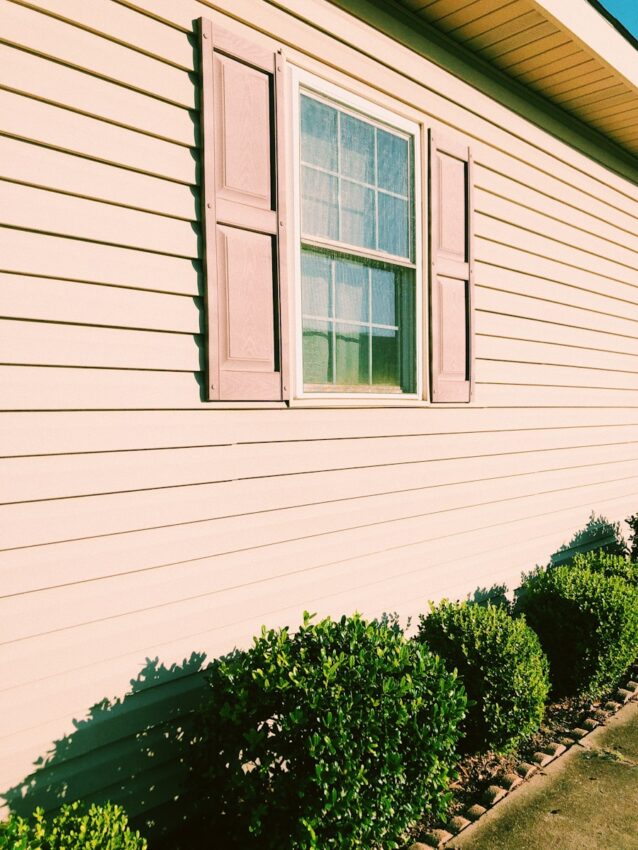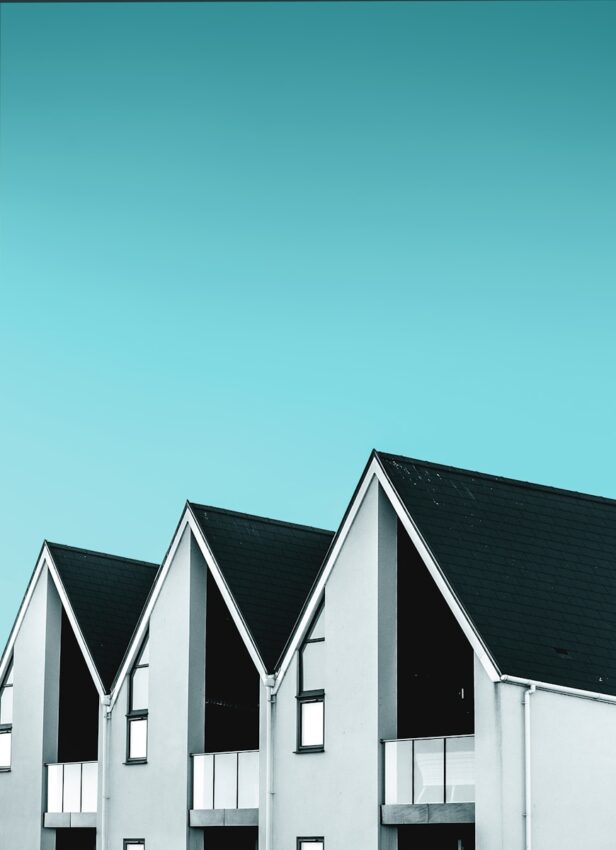It’s easy to fall in love with a fresh coat of paint, gleaming new fixtures, or perfectly installed cabinetry. When you’re in the middle of a home renovation, especially in an older house, the excitement of transforming a space can take over quickly. But while energy often goes toward what’s happening inside, there’s a whole world of potential problems just beyond the walls.

Neglecting the outside of your home, even unintentionally, can derail your best efforts indoors. Leaky siding, an aging roof, or poor drainage won’t stay outside where they belong. Over time, they find ways in—seeping through walls, swelling baseboards, or staining freshly painted ceilings.
Renovating an older home requires more than creativity and vision. It also demands a solid understanding of what’s holding everything together on the outside.
The Cost of Skipping Exterior Inspections
Every home has its secrets. Some are charming, like original hardwood floors hiding under carpet. Others aren’t so endearing, especially the ones that sneak up after renovations are already underway. A soft spot in the subfloor, mysterious water stains, or persistent drafts can all be traced back to exterior issues that went unnoticed.
Before you demo a wall or start planning the fun stuff, it’s worth stepping outside and taking a good, honest look. Siding that’s warped or gutters that seem just a bit loose might not seem like a big deal. But these small signs often point to bigger problems behind the scenes that could compromise all the work you’re doing inside.
One of the most frustrating parts of renovating an older home is discovering damage that could’ve been caught with a quick exterior check. That cozy new family room won’t feel so comfortable if you have to rip open a wall to deal with moisture from cracked siding. It’s the kind of situation that turns a weekend project into a months-long fix.
If your plans include interior remodeling, like a beginner’s kitchen renovation, you’ll want to be sure the space is protected from the outside in. Taking the time to inspect your home’s exterior now could save you a lot of stress and cash later.

Top 5 Exterior Problems That Can Wreck Your Renovation
Renovating an older home can feel like peeling back layers of history. But as you update what’s inside, the exterior may be quietly working against you. Here are five of the most common outside issues that can cause trouble long after the paint dries indoors.
- Worn-Out Siding
Siding that’s warped, cracked, or discolored isn’t just an eyesore. It allows moisture to creep in, and once it’s behind your walls, it doesn’t take long to cause damage. If you’re investing in drywall, cabinetry, or flooring, it’s worth making sure your siding isn’t undoing that hard work.
- Aging or Leaky Roof
A roof nearing the end of its lifespan might not seem urgent—until water starts showing up in places it doesn’t belong. Even a minor leak can ruin ceilings, insulation, and recent upgrades. Roofs deserve as much attention as any renovation plan, especially in older homes.
- Clogged or Damaged Gutters
Gutters are easy to overlook, but they play a critical role. When they’re clogged or detached, water doesn’t drain properly. It pools around the foundation or seeps into walls, setting the stage for long-term damage.
- Foundation Cracks
Hairline cracks might be expected in older homes, but growing or shifting cracks are a warning sign. Uneven floors, sticking doors, or gaps in trim can all point to movement below. Structural issues, left unchecked, can compromise your remodel.
- Poor Ventilation and Attic Issues
Inadequate airflow traps moisture in the attic, which can filter down into living spaces. That damp feeling in your brand-new bedroom could be a ventilation issue. Inspecting vents and insulation helps preserve the comfort of your updated space.

Why Siding Matters More Than You Think
When you’re standing in your kitchen dreaming about tile patterns or trying to choose the perfect cabinet color, siding probably isn’t on your mind. But if the outside of your home isn’t holding up, your plans inside could be at risk before they even begin.
Siding protects everything inside. In older homes, it deserves close attention. Wood siding may have absorbed decades of moisture. Even vinyl, though durable, can crack or buckle, allowing rain and pests to slip through.
There’s also insulation to think about. Drafty rooms, uneven temperatures, or high energy bills might be traced back to siding that’s no longer doing its job. Once the layers underneath are compromised, it doesn’t take much for mold or water stains to follow.
If your siding looks tired or worn, it may be time for a closer look. Replacing or repairing it before you renovate is one of the smartest moves you can make—not just for your current project but also for the long-term health of your home.
Regional Realities: How Climate Impacts Exterior Wear and Tear
Weather plays a major role in how well a home’s exterior holds up over time. What works in one climate might fall short in another, and the wear and tear your home faces often comes down to where you live.
In humid states like Georgia or Louisiana, moisture is a year-round issue. Homes there deal with mildew, warped wood, and swollen trim. Snowy areas like Vermont or Michigan face constant freeze-thaw cycles that crack siding and loosen shingles. In dry regions like Arizona or New Mexico, intense sun fades paint and causes vinyl to become brittle.
Then there’s the Pacific Northwest—known for steady rain and cooler temperatures. Moisture lingers, leading to hidden rot, compromised siding, and mold beneath the surface, especially in older homes.
In places like Oregon, where rain is a regular part of life, siding does more than improve curb appeal. It protects everything inside. For homeowners in areas like Portland, working with a trusted Portland siding company can help prevent moisture issues before they start. A thorough inspection and siding upgrade might not be as exciting as new flooring, but it can avoid all that from being undone a year later.
When to DIY vs. Call in a Pro
Doing things yourself can be satisfying, especially in an older home. Painting a room or organizing a pantry is well within reach. But when it comes to siding, roofing, or structural elements, it’s important to know where to draw the line.
Cleaning gutters or resealing windows? That’s DIY-friendly. Climbing onto the roof or replacing siding? That’s when it’s smart to bring in a professional. What seems like a small repair often reveals deeper issues, and professionals have the experience to spot and fix them properly.
Hiring help may stretch your budget, but it protects everything else you’re investing in. Sometimes, the best DIY decision is knowing when not to do it yourself.
The Smart Renovator’s Checklist (Before You Tear Down a Wall)
Even the most exciting renovations should start with a few smart checks outside. These steps can prevent setbacks and help you prioritize your budget where it matters most.
- Walk the perimeter: Look for loose siding, peeling paint, or water damage.
- Check the gutters: Make sure they’re clean, secure, and draining away from the house.
- Inspect the roof: Binoculars can help spot missing shingles or uneven areas.
- Peek in the attic: Check for damp insulation, pests, or mold.
- Watch your foundation: Small cracks might be normal, but wider ones are worth noting.
- Feel for drafts: Check around windows and doors, especially on windy days.
These inspections strengthen your renovation from the outside in. According to the U.S. Department of Energy, a well-designed and well-maintained building envelope—roof, siding, windows, and foundation—supports energy efficiency, comfort, and durability.
Before choosing paint colors or installing new fixtures, spend some time outdoors with a checklist and a sharp eye. It might be the smartest part of your renovation.
Protect What You’re Building
Older homes are full of charm, quirks, and surprises. While it’s easy to get caught up in the fun of choosing finishes and updating rooms, the parts of your home that no one sees can have the biggest impact.
A leaking roof or failing siding won’t wait until the project’s over. Starting with the exterior makes sure everything you’re building on the inside stands strong. Whether it’s a full renovation or just refreshing a single room, success starts with a home that’s well-protected from the outside in.
